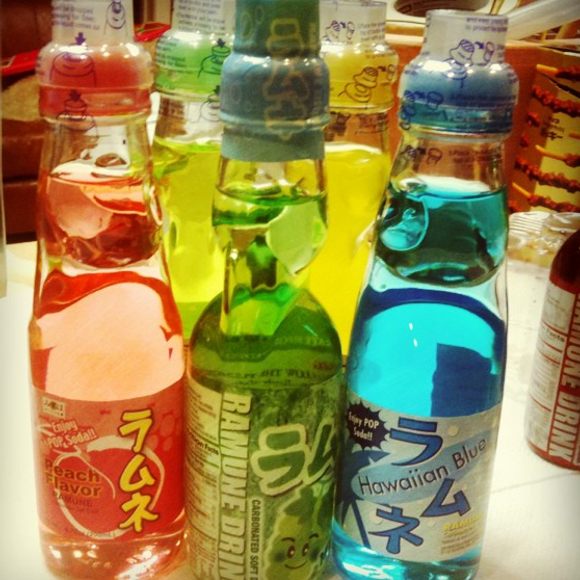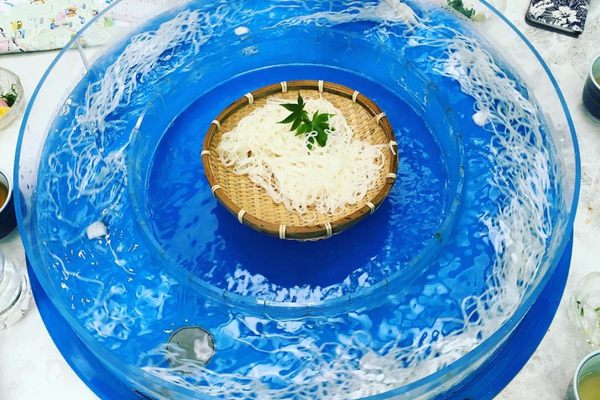Opening a bottle of the Japanese soda known as Ramune is almost as complicated as assembling furniture. First, you unwrap the label around the top and remove the accompanying plastic plunger. Then you place the plunger on the unusual seal that sits in the bottle’s neck—a small marble—and press down. As the marble slides out of its rubber ring, you’ll hear a highly satisfying whoosh. Now it’s time to discard the plunger and start drinking. As you sip—slowly, as to not let the marble block up the opening again—you will taste a combination of lemon-lime and bubble gum.
Despite its popularity in Japan, many of Ramune’s features are European. The original drink was devised by a Scottish pharmacist named Alexander Cameron Sim, who lived in Kobe. In 1884, Sim formulated a new carbonated drink based on lemonade and started selling it at a stand to fellow foreigners. After his tonic developed a reputation as a cure for cholera, it skyrocketed in popularity and took on the name Ramune, a Japanese approximation of the word for lemonade.
At the time, the only bottle option for carbonated drinks was a Codd-neck bottle, an English invention that used a marble and a rubber ring to hold in the carbonation. After the bottle cap was developed in 1892, the Codd bottle became obsolete, and now Ramune is one of the only drinks still using it.
Though its bottle is something of an antique, Ramune comes in a wide variety of modern flavors beyond its original lemon-lime, including corn soup, curry, and takoyaki sauce.
Where to Try It
-
Village Vanguard Shibuya
Udagawacho 33-1, Shibuya Grand B1F, Tokyo, 150-0042 , JapanThe store specializes in Japanese gifts, candies, and drinks.
-
Galco's Soda Pop Stop Website
5702 York Blvd, Los Angeles, California, 90042, United StatesGreat mom and pop store with a wide selection of unique sodas, beers, wines, and more. Great sake too!
Written By
 Wherehaveibeen
Wherehaveibeen
Sources
- washokufood.blogspot.com/2009/07/ramune-lemonade.html
- www.japancentre.com/en/pages/66-ramune-soda
- www.wikihow.com/Open-and-Drink-a-Bottle-of-Ramune-Pop
- soranews24.com/2013/06/15/we-sample-curry-octopus-kimchi-chili-pepper-salted-watermelon-and-corn-flavored-ramune-sodas/
- www.thejapanguy.com/japanese-ramune-a-bubbling-good-time/

















